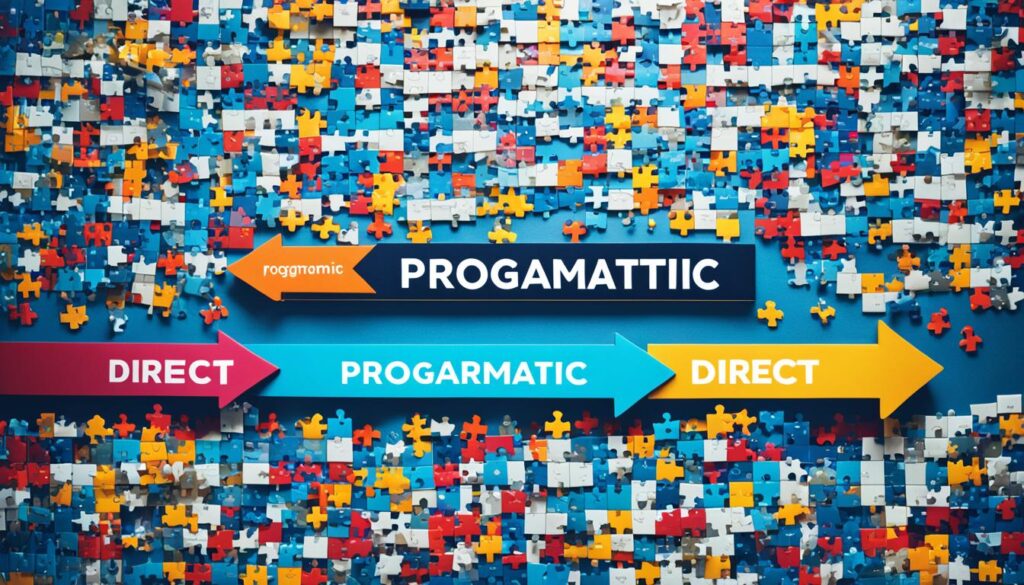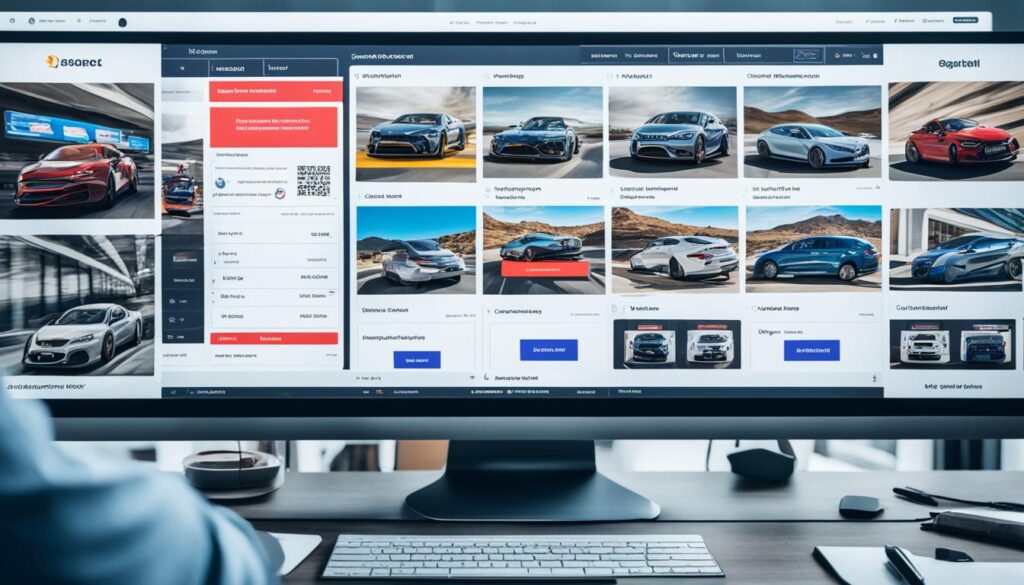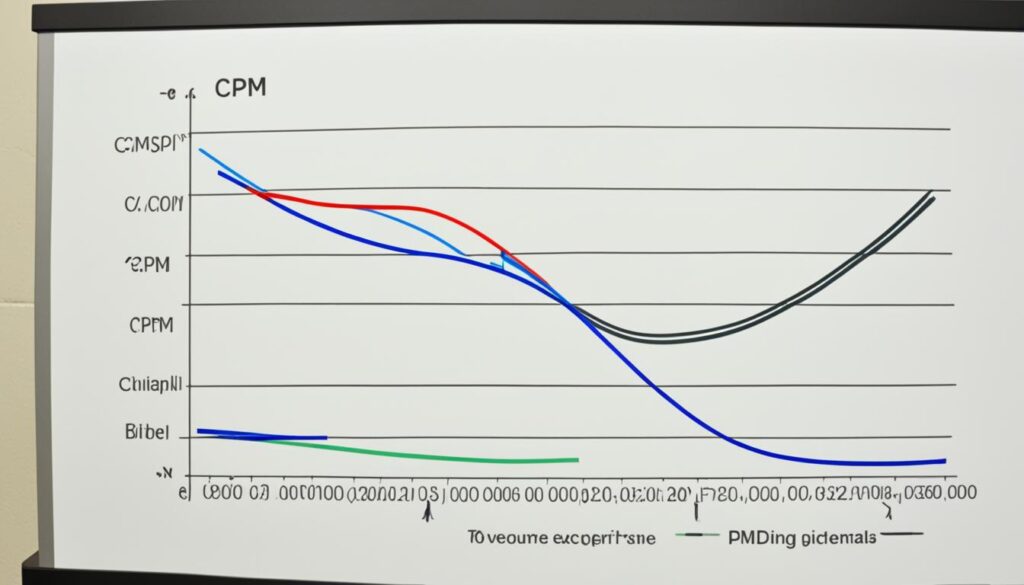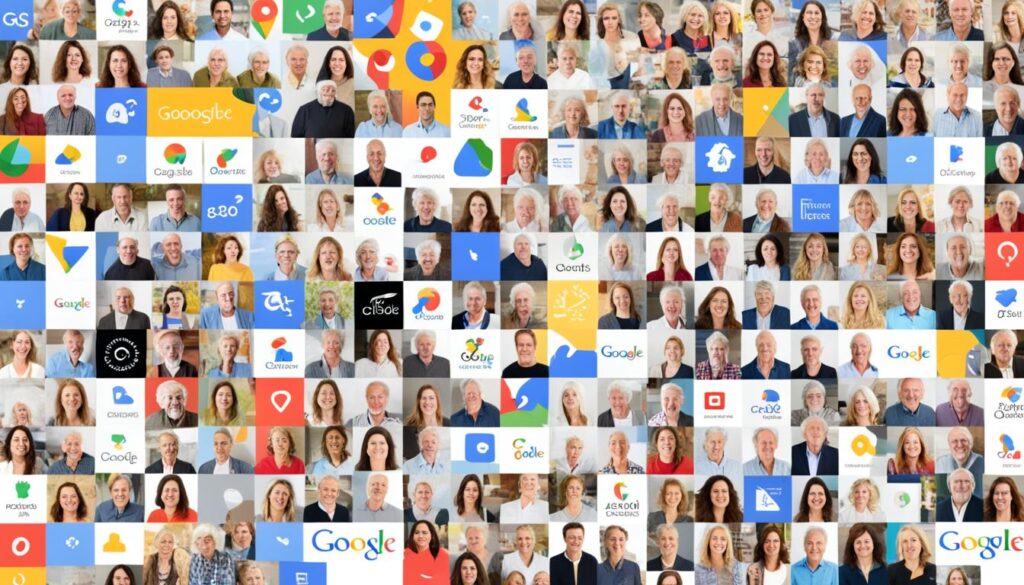Advertising
Local SEO Deep Dive: 5 Expert Strategies You Can’t Ignore

We’ve uncovered the key to mastering local SEO. In this article, we’ll reveal five critical strategies that are essential.
Get ready to optimize your Google My Business, conduct thorough local keyword research, manage online reviews like a pro, design a mobile-friendly website, and build powerful local links.
This deep dive into local SEO will equip you with the tools you need to dominate your local market. Don’t miss out on these game-changing tactics!
Key Takeaways
- Utilize Google My Business Insights to analyze customer interactions and improve online presence.
- Implement local citation building to ensure accurate and consistent business information across online directories.
- Actively manage online reviews to maintain a positive image and attract more customers.
- Prioritize designing a responsive and mobile-friendly website for a seamless user experience and improved search rankings.
Google My Business Optimization
First, we’ll discuss five expert strategies for optimizing Google My Business.

To start, it’s crucial to utilize Google My Business Insights, which provides valuable data about customer interactions, such as visibility, engagement, and audience demographics. By analyzing these insights, businesses can make informed decisions to improve their online presence.
Another key strategy is local citation building. This involves ensuring that accurate and consistent information about your business, such as name, address, and phone number, is listed across various online directories and platforms. This not only enhances your search engine rankings but also helps potential customers find your business more easily.
Now that we’ve covered the importance of optimizing Google My Business and local citation building, let’s delve into the next section about local keyword research.
Local Keyword Research
Continuing our exploration of local SEO strategies, let’s now delve into the importance of local keyword research.

Conducting thorough keyword research is crucial for optimizing your website and content for local search. Here are four key reasons why local keyword research is essential:
- Targeting local audience: By identifying relevant local keywords, you can attract potential customers in your target area and increase your online visibility.
- Staying updated with local SEO trends: Keyword research helps you stay informed about the latest local SEO trends, ensuring that your content remains relevant and competitive.
- Optimizing local citation building: Understanding local keywords allows you to incorporate them effectively in your business listings and citations, improving your chances of ranking higher in local search results.
- Driving targeted traffic: Local keyword research helps you identify high-intent, location-specific keywords that are more likely to drive qualified traffic to your website.
Online Review Management
Now let’s dive into the importance of managing online reviews for local SEO success.
Reputation management is a crucial aspect of any business’s online presence. Customer feedback plays a significant role in shaping a company’s reputation and influencing potential customers’ decisions.
By actively managing online reviews, businesses can maintain a positive image and attract more customers. Regularly monitoring and responding to customer feedback helps build trust and credibility.

Positive reviews can also boost a business’s visibility and rankings in local search results. On the other hand, addressing negative reviews promptly and professionally shows potential customers that the business values their satisfaction.
Implementing an effective online review management strategy is essential for local SEO success and maintaining a favorable reputation in the digital landscape.
Mobile-Friendly Website Design
To optimize local SEO, we prioritize designing a mobile-friendly website. In today’s digital landscape, mobile devices have become the primary means of accessing the internet. Therefore, having a responsive design is crucial for ensuring a seamless user experience across all devices.
Here are four key reasons why a mobile-friendly website design is essential for local SEO:

- Enhanced user experience: A mobile-friendly website provides a smooth and intuitive browsing experience, resulting in higher engagement and lower bounce rates.
- Improved search rankings: Google considers mobile-friendliness as a ranking factor, meaning a mobile-friendly website is more likely to appear higher in search results.
- Increased website traffic: With the majority of internet users accessing the web through mobile devices, a mobile-friendly website ensures that you reach a wider audience and attract more visitors.
- Higher conversion rates: A well-designed mobile site with easy navigation and clear call-to-action buttons can lead to higher conversion rates and drive more leads and sales.
Local Link Building
Building strong local links is crucial for maximizing the impact of your local SEO efforts. By building relationships with other businesses in your community, you can create valuable partnerships that benefit both parties and improve your website’s visibility in local search results. Community engagement is a key aspect of local link building, as it allows you to connect with local organizations, events, and influencers who can provide valuable backlinks and exposure. Building local links can be achieved through various strategies, such as sponsoring local events, participating in community projects, and collaborating with local businesses on joint marketing initiatives. These partnerships not only improve your website’s authority and visibility but also demonstrate your commitment to the local community, which can enhance your brand’s reputation and attract more local customers.
| Local Partnerships | Community Engagement | Benefits |
|---|---|---|
| Sponsoring local events | Participating in community projects | Increased brand visibility |
| Collaborating with local businesses | Engaging with local influencers | Improved website authority |
| Supporting local charities | Hosting community workshops | Enhanced brand reputation |
| Contributing to local publications | Attending local networking events | Attracting more local customers |
| Offering discounts to local residents | Volunteering for local causes | Building strong community relationships |
Frequently Asked Questions
How Can I Claim and Verify My Google My Business Listing?
To claim and verify your Google My Business listing, go to the Google My Business website and follow the prompts. Once verified, optimize your profile by adding accurate business information, photos, and regularly updating posts.
What Are Some Effective Strategies for Finding and Targeting Local Keywords?
Looking for effective strategies to find and target local keywords? We’ve got you covered! Local keyword research techniques and optimizing website content for local keywords are essential for dominating the local search results. Let’s dive in!
How Can I Effectively Manage and Respond to Online Reviews for My Local Business?
Managing and responding to online reviews is crucial for our local business. We prioritize online reputation management and understand the importance of customer feedback. It helps us build trust and improve our services.

What Are the Key Elements to Consider When Designing a Mobile-Friendly Website for Local Seo?
When designing a mobile-friendly website for local SEO, key elements to consider are responsive design, fast loading speed, intuitive navigation, and optimized content. Best practices include using clear calls-to-action and ensuring compatibility across devices.
How Can I Build High-Quality Local Links to Improve My Website’s Visibility in Local Search Results?
To improve our website’s visibility in local search results, we focus on building high-quality local links. This involves building local citations and optimizing our website for local search.
Conclusion
In the quest for local SEO success, we’ve explored five expert strategies that can’t be ignored.
Just like a ship needs a strong captain to navigate through treacherous waters, your business needs these essential tools to sail through the competitive online landscape.

From optimizing your Google My Business profile to building local links, these strategies will help you conquer the local search rankings and reach your target audience effectively.
So, set sail with confidence and watch your business soar to new heights!
Advertising
Programmatic Advertising vs Direct Buying Explained

In the ever-evolving world of digital advertising, staying ahead of the game is essential. As technology continues to shape the industry, advertisers are faced with a crucial decision: programmatic advertising or direct buying? The choice they make can greatly impact the success of their campaigns and ultimately, their bottom line.
Did you know that programmatic advertising is projected to account for 88% of all digital display ad spending in the United States by 2021? That’s a staggering statistic that highlights the immense growth and popularity of this automated approach to media buying.
Programmatic advertising takes the manual process of direct buying and revolutionizes it through the power of technology. Instead of negotiating and purchasing ad space directly from publishers, programmatic advertising relies on real-time bidding and machine learning algorithms to automatically place ads in front of the right audience at the right time.
But what exactly is the difference between programmatic advertising and direct buying, and when should advertisers choose one over the other? In this article, we will dive deep into the world of programmatic advertising versus direct buying, exploring their key differences, benefits, and how combining the two can lead to successful campaigns.
Key Takeaways:
- Programmatic advertising is projected to account for 88% of all digital display ad spending in the United States by 2021.
- Programmatic advertising uses real-time bidding and machine learning to automate the media buying process.
- Direct buying involves manual negotiations and transactions to secure ad space.
- Programmatic advertising offers precise targeting options, while direct buying gives marketers more control over ad placement.
- Combining programmatic and direct advertising can create a comprehensive and effective campaign strategy.
What Is Programmatic vs. Direct in Media Buying?
In the world of media buying, two primary methods stand out: programmatic advertising and direct advertising. These approaches have different approaches, and understanding their nuances is crucial for successful campaigns.
Direct advertising is the traditional method of purchasing media ad space. It involves manual negotiations and transactions between advertisers and publishers. Marketers directly communicate with ad space vendors, discussing terms, pricing, and ad placement. This method allows advertisers more control over the timing and location of their ad placements.
On the other hand, programmatic advertising takes the process of direct advertising and adds automation to it. Leveraging real-time bidding, artificial intelligence, and machine learning, programmatic platforms streamline the media buying process. Advertisers can input their campaign details and goals into a programmatic platform, which then executes the media buying process on their behalf.
Benefits of Programmatic Advertising
“Programmatic advertising offers unparalleled efficiency and reach for marketers. By leveraging real-time bidding and advanced algorithms, programmatic platforms can identify and target highly specific audience segments, optimizing ad delivery and performance.”
Benefits of Direct Advertising
“Direct advertising provides advertisers with a high level of control over their ad placements. It allows for direct negotiations with ad space vendors, facilitating customized campaigns and ensuring precise ad placement at preferred timings and locations.”
Combining programmatic and direct advertising can be a powerful strategy. Marketers can benefit from the precision and reach of programmatic advertising while also harnessing the control and customization of direct advertising. This integrated approach enables advertisers to create comprehensive and effective media buying campaigns that successfully engage their target audience.

| Comparison | Programmatic Advertising | Direct Advertising |
|---|---|---|
| Ad Space Purchasing | Automated through real-time bidding and algorithms. | Manual negotiation and transactions with ad space vendors. |
| Control over Ad Placements | Relies on algorithms and audience targeting for ad placements. | Direct negotiations for precise ad placement. |
| Targeting Options | Precision targeting based on audience data and behavior. | Broader reach through targeted mediums like billboards or TV commercials. |
| Execution Speed | Automated process, significantly faster than manual negotiations. | Depends on the timeline of negotiations with vendors. |
Direct vs. Programmatic Advertising: Key Differences
In the world of digital advertising, direct buying and programmatic buying are two distinct approaches that marketers can take to place their ads. Understanding the key differences between these two methods is crucial for advertisers to make informed decisions about their ad placements. Here, we explore the contrast between direct and programmatic advertising, highlighting the role of technology and the level of control marketers have over ad placement.
The Role of Technology
Direct buying:
Direct buying involves a person handling the ad placement process, from negotiations with ad space vendors to the final placement of the ad. It requires direct communication and collaboration between the advertiser and the ad space vendor.
Programmatic buying:
Programmatic buying, on the other hand, relies on technology and automation. It utilizes real-time bidding and machine learning algorithms to select ad placements. Marketers can leverage programmatic platforms that execute the buying process on their behalf, eliminating the need for manual negotiations.
Control Over Ad Placement
When it comes to control over ad placement, direct buying and programmatic buying offer contrasting approaches.
Direct buying:
Direct buying allows marketers to have more control over the precise timing and location of ad placements. Through negotiations with ad space vendors, they can secure specific spots and tailor the ad placement to their campaign objectives. This approach is suitable for marketers who prioritize control and customization over their ad placements.
Programmatic buying:
With programmatic buying, technology takes the reins, making automated decisions based on real-time data and targeting parameters. While marketers have less control over the specific ad placements, programmatic buying offers more precise targeting options, ensuring ads are shown to the most relevant users at the right time. This method is ideal for marketers who value efficiency and broad reach.
Reaching Audiences
Direct buying:
Direct buying allows advertisers to reach broader audiences through traditional mediums like billboards, TV commercials, and print publications. This approach is effective for capturing the attention of a wide range of viewers.
Programmatic buying:
Programmatic buying, with its advanced targeting capabilities, offers a more precise approach to reach specific audience segments. It leverages data and algorithms to deliver ads to users who match the desired criteria, leading to more efficient and effective campaigns.

When to Use Programmatic Advertising vs. Direct Buying
Knowing when to use programmatic advertising or direct buying can significantly impact the success of your media buying strategies. Both approaches have distinct advantages and scenarios where they excel. Understanding these nuances enables marketers to make informed decisions that align with their target audience and campaign objectives.
Programmatic Advertising:
Programmatic advertising offers a range of benefits that make it a suitable choice in certain situations:
- Over Capacity: When marketers find themselves overwhelmed with campaign management tasks or lack the internal resources to handle media buying efficiently, programmatic advertising provides a solution. By leveraging the power of technology and automation, it streamlines processes, saving time and effort.
- Targeted Audience Segments: Programmatic advertising shines when you want to reach specific audience segments. The sophisticated algorithms and real-time bidding capabilities of programmatic platforms enable precise targeting, ensuring your ads are seen by the right people at the right time.
- Driving Specific Actions: If your objective is to push users to take specific actions, such as signing up for a newsletter or making a purchase, programmatic advertising can be highly effective. Its ability to deliver relevant messages to the right users increases the likelihood of conversion.
Direct Buying:
Direct buying offers unique advantages that are valuable in specific scenarios:
- Targeting Inaccessible Audiences: In situations where programmatic methods cannot effectively reach your target audience, direct buying becomes essential. Whether it’s targeting niche markets or specific locations, direct buying allows marketers to tap into ad vendors or publishers with exclusive access.
- Crucial Ad Vendor Connections: Building direct relationships with ad vendors can be advantageous for securing premium ad placements. Direct buying enables marketers to negotiate directly with vendors, allowing for more control over ad placement, timing, and the overall campaign strategy.
- Unique and Expensive Ad Placements: Some campaigns require special ad placements that demand meticulous oversight. Direct buying gives marketers the opportunity to closely monitor and manage these placements, ensuring the desired impact and brand messaging.
By assessing your specific campaign objectives, target audience, and available resources, you can determine whether programmatic advertising or direct buying is the appropriate approach.

Target Audience:
| Scenario | Programmatic Advertising | Direct Buying |
|---|---|---|
| Over Capacity | ✓ | |
| Targeted Audience Segments | ✓ | |
| Driving Specific Actions | ✓ | |
| Targeting Inaccessible Audiences | ✓ | |
| Crucial Ad Vendor Connections | ✓ | |
| Unique and Expensive Ad Placements | ✓ |
Media Buying Campaigns: Using Programmatic and Direct Advertising Together
When it comes to media buying campaigns, combining programmatic advertising with direct buying can be a game-changer. By leveraging the precision of programmatic targeting and the control and connections of direct buying, marketers can create a more comprehensive and effective campaign that reaches their target audience through various channels and platforms.
Programmatic advertising, with its automated real-time bidding and machine learning algorithms, allows marketers to target specific audience segments and optimize campaign performance. It enables us to reach the right people, at the right time, with the right message.
“Programmatic advertising automates the process of media buying, ensuring efficiency and precision.”
On the other hand, direct buying gives us more control over ad placements, allowing us to negotiate with ad space vendors and choose the timing and location of our ads. Direct buying is especially valuable when we want to reach broader audiences through mediums like billboards and TV commercials.
By combining programmatic and direct advertising, we can benefit from the strengths of both approaches. Programmatic advertising enables us to target specific audience segments and optimize campaigns in real time, while direct buying gives us control over strategic ad placements and allows us to tap into unique and influential media outlets.
Consider the following scenario:
| Programmatic Advertising | Direct Buying |
|---|---|
| Highly targeted audience segments | Control over ad placements |
| Automated optimization | Access to unique media outlets |
| Real-time campaign performance tracking | Opportunity for strategic negotiations |
As shown in the table above, combining programmatic and direct advertising allows us to harness the strengths of both methods to create a more impactful campaign.
Furthermore, using a combined approach can help us maximize our reach and engagement. Programmatic advertising can identify and target specific audience segments based on data-driven insights, while direct buying can help us tap into high-impact placements and establish a presence in influential media outlets.

By integrating programmatic and direct advertising, we can take our media buying campaigns to new heights, reaching our target audience effectively and efficiently.
Why Work With a Media Execution Partner?
When it comes to navigating the complex world of programmatic advertising and direct buying, partnering with a media execution expert can be a game-changer. At our agency, we understand the intricacies of these advertising methods and can provide valuable expertise and resources to maximize your campaign’s success.
Why should you consider working with a media execution partner? Here are a few key reasons:
- Optimized Campaigns: Media execution partners have deep knowledge and experience in optimizing campaigns. They can help you fine-tune targeting parameters, select the right ad formats, and optimize your budget for maximum results.
- Insights and Recommendations: Our experts stay updated on the latest industry trends and best practices. They can provide valuable insights and recommendations to enhance your campaign performance and stay ahead of the competition.
- Negotiations with Ad Vendors: Handling negotiations with ad vendors can be a time-consuming and challenging task. Media execution partners have established relationships and can negotiate favorable terms on your behalf, ensuring you get the best possible value for your ad placements.
Working with a media execution partner goes beyond just campaign optimization. They act as your strategic advisor and collaborator, aligning your goals with the most effective media buying strategies for your target audience.
Expert Quote
“Working with a media execution partner gives you access to the collective knowledge and experience of a team dedicated to your campaign’s success. We bring a depth of expertise in programmatic advertising and direct buying, allowing you to leverage the full potential of these methods.”
– Media Execution Expert, [Agency Name]
By partnering with us, you can benefit from our extensive network, industry insights, and campaign optimization strategies to drive better results. Let’s take a look at an example of how a media execution partner can assist you:
| Challenge | Solution | Outcome |
|---|---|---|
| Difficulty in reaching the target audience effectively | Utilizing programmatic advertising to leverage data-driven targeting options and optimize audience reach | Increased campaign performance with higher engagement and conversion rates |
| Limited resources and expertise in campaign optimization | Partnering with a media execution expert who can provide insights and recommendations for improved ROI | Optimized campaign performance and better allocation of resources |
| Challenges in negotiating favorable terms with ad vendors | Having a media execution partner handle negotiations to secure the best possible value for ad placements | Cost-effective ad placements and maximized return on investment |

| Benefits of Media Buying |
|---|
| 1. Access to a wide range of ad spaces |
| 2. Targeted reach to specific audience segments |
| 3. Increased brand visibility and awareness |
| 4. Improved audience engagement and response rates |
| 5. Opportunity to leverage popular and reputable platforms |
| 6. Optimization of ad placements for better campaign performance |
| 7. Flexibility in managing ad budgets and campaign durations |
Programmatic vs. Real-Time Bidding
When it comes to programmatic advertising, real-time bidding plays a significant role in reaching the target audience effectively. Marketers utilize a demand-side platform (DSP) to input their campaign details and target audience. The DSP then establishes a connection with supply-side platforms (SSPs) used by publishers to sell their ad inventory. Here’s how real-time bidding works within the ad exchange:
- The user attempts to access a webpage.
- The DSP analyzes the target audience based on their past behaviors.
- The DSP places a bid on the target audience within the ad exchange.
- The ad exchange is a virtual marketplace where advertisers and publishers come together to facilitate the buying and selling of ad space.
Real-time bidding allows marketers to leverage valuable data on user behavior and preferences to strategically bid on ad placements that align with their campaign goals. By participating in real-time bidding within the programmatic advertising ecosystem, advertisers can effectively target their desired audience and optimize their ad spend.

Why Real-Time Bidding Matters
“Real-time bidding empowers advertisers to reach their target audience precisely and efficiently within the programmatic landscape. By leveraging data analysis and strategic bidding, marketers can optimize their campaigns, achieve higher conversion rates, and maximize the return on their advertising investment.”
The Importance of Attribution in Programmatic and Direct Advertising
When it comes to tracking the success of advertising campaigns, attribution plays a crucial role. In the world of programmatic advertising, attribution is even more vital, offering marketers valuable insights into user behavior and campaign effectiveness. While both programmatic and direct advertising have their strengths, programmatic platforms provide more robust attribution capabilities.
Programmatic advertising allows marketers to track user touchpoints across various channels. This data helps in understanding how users interact with different channels before finally clicking on a programmatic ad. By analyzing these touchpoints, marketers gain a deeper understanding of the user journey and can optimize their campaigns accordingly. This level of insight is extremely valuable in refining targeting strategies and improving overall campaign performance.
“Programmatic advertising offers valuable attribution data, enabling us to optimize campaigns based on user touchpoints and interactions across multiple channels.”
On the other hand, direct advertisers have a more limited scope when it comes to tracking impressions and attributing them to specific ad placements. While they may have access to basic metrics such as click-through rates and conversions, the ability to track the entire user journey is often lacking. This makes it difficult for direct advertisers to allocate credit accurately and optimize their campaigns based on comprehensive data.
To illustrate the difference, let’s take a look at a table comparing the attribution capabilities of programmatic advertising and direct buying:
| Programmatic Advertising | Direct Buying | |
|---|---|---|
| Tracking User Touchpoints | Yes | No |
| Data on User Interactions | Comprehensive | Limited |
| Ability to Optimize Campaigns | Yes | Limited |
As we can see, programmatic advertising offers marketers a clear advantage when it comes to attribution and campaign optimization. The ability to track user touchpoints, gather comprehensive data on user interactions, and optimize campaigns based on this data give programmatic advertising a significant edge over direct buying.
Ultimately, attribution is essential for understanding the impact of advertising efforts and making data-driven decisions. By harnessing the power of programmatic advertising’s robust attribution capabilities, marketers can gain deep insights into user behavior, refine their targeting strategies, and maximize the effectiveness of their campaigns.
In Summary
Programmatic advertising provides more advanced attribution capabilities compared to direct buying. By tracking user touchpoints and capturing data on user interactions across various channels, programmatic platforms offer valuable insights that help marketers optimize their campaigns. Direct advertising, on the other hand, has limited attribution capabilities, making it challenging for advertisers to track impressions effectively and attribute them to specific ad placements. For marketers seeking a comprehensive understanding of their audience and campaign performance, programmatic advertising’s attribution capabilities are crucial.

Price Models in Programmatic and Direct Advertising
The pricing models in programmatic and direct advertising have distinctive approaches. Programmatic platforms commonly utilize a cost per thousand impressions (CPM) model, where the bid price varies based on the likelihood of user conversion. On the other hand, direct buying involves negotiating a flat fee or minimum budget with the ad vendor. Advertisers can also bargain prices based on their bargaining power and rapport with the vendor.
| Price Model | Description |
|---|---|
| Programmatic Advertising (CPM) | Programmatic advertising operates on a CPM model, meaning advertisers pay based on the number of impressions their ad receives, typically per thousand impressions. |
| Direct Buying (Negotiated Fee) | Direct buying involves negotiating a flat fee or minimum budget directly with the ad vendor. The price is determined through discussions and agreements between the advertiser and the vendor. |
| Bargaining Power | The price in direct buying can be influenced by the advertiser’s bargaining power and the relationship established with the vendor. Advertisers with a higher budget or long-term commitment might have more flexibility in negotiating favorable rates. |
Understanding the different price models can help advertisers determine the most suitable approach based on their campaign goals, budget, and target audience.

Conclusion
In conclusion, understanding the differences between programmatic advertising and direct buying is essential for marketers to make informed decisions about their media buying strategies.
Programmatic advertising offers precision and automation, allowing marketers to reach their target audience more effectively and optimize their campaigns based on real-time data. By leveraging advanced technologies such as real-time bidding and machine learning, programmatic advertising offers a scalable and efficient solution for media buying.
On the other hand, direct buying provides marketers with control and customization. It allows for more personal relationships with ad vendors and offers the ability to negotiate specific ad placements and timing. Direct buying is particularly useful when targeting niche audiences or when premium ad placements require closer oversight.
However, the most effective approach is often a combination of programmatic and direct advertising. By leveraging the precision of programmatic advertising and the control of direct buying, marketers can create comprehensive and effective campaigns that reach their target audience through various channels and platforms. Working with a media execution partner can further optimize media buying strategies and provide valuable insights and recommendations.
Programmatic advertising automates the media buying process using real-time bidding and machine learning, while direct buying involves manual negotiations and transactions with ad space vendors. Programmatic advertising is suitable when marketers are over capacity, looking for outsourcing options, or want to target specific audience segments. Direct buying is useful when programmatic methods can’t reach the target audiences, when connections with ad vendors are crucial, or when expensive and unique ad placements require heavy oversight.
Combining programmatic and direct advertising allows for a more comprehensive and effective campaign that reaches the target audience through different channels and platforms.
A media execution partner can provide valuable expertise and resources, optimize campaigns, provide insights and recommendations, handle negotiations with ad vendors, and assist in creating effective media buying strategies.
Media buying is the process of procuring and purchasing ad space to display media content and ad copy to target users.
Programmatic advertising often involves real-time bidding, where marketers use a demand-side platform (DSP) to place bids on target users in ad exchanges based on their past behaviors. The highest bidder’s ad is displayed to the user when the webpage loads. Attribution allows marketers to track user touchpoints and gather data on how users interacted with different channels before clicking on an ad. This helps optimize campaigns and better understand the user journey.
Programmatic advertising typically uses a cost per thousand impressions (CPM) model, where the bid price varies based on the likelihood of user conversion. Direct buying may involve negotiating a flat fee or minimum budget with the ad vendor.
FAQ
What is the difference between programmatic advertising and direct buying?
When should I use programmatic advertising versus direct buying?
How can combining programmatic and direct advertising benefit my media buying campaigns?
Why should I work with a media execution partner?
What is media buying?
How does programmatic advertising relate to real-time bidding?
Why is attribution important in programmatic and direct advertising?
What are the pricing models in programmatic and direct advertising?
Advertising
Programmatic Advertising vs GDN: Our Insights

Did you know that programmatic advertising is predicted to account for 86.2% of all display ad spending in the United States by 2021? With its ability to reach a vast audience and optimize ad placements in real-time, programmatic advertising has transformed the digital advertising landscape.
However, recent changes to content targeting in the Google Display Network (GDN) have raised concerns among advertisers about their return on investment (ROI). As Google eliminates the functionality of making “and” statements in content targeting, advertisers may need to explore other advertising channels to maintain their ad reach and maximize ROI.
In this article, we will delve into the world of programmatic advertising and compare it to the power of the Google Display Network (GDN). We will examine the differences between these two advertising strategies to help you make informed decisions and make the most out of your digital ad campaigns.
Key Takeaways:
- Programmatic advertising is predicted to account for 86.2% of display ad spending in the US by 2021.
- Changes in content targeting in the Google Display Network (GDN) have raised concerns among advertisers about their ROI.
- Programmatic advertising leverages algorithms and real-time bidding to reach specific audiences and optimize ad placements.
- The GDN offers a wide network of websites, YouTube videos, and apps for advertisers to reach their target audience.
- Choosing between programmatic advertising and GDN depends on factors such as budget, targeting needs, and desired level of control.
Understanding Programmatic Advertising
In today’s digital advertising landscape, programmatic advertising has emerged as a powerful tool for marketers to effectively reach their target audiences. This automated form of advertising utilizes sophisticated software and algorithms to streamline the process of purchasing online ad placements. By leveraging real-time bidding, programmatic advertising enables advertisers to deliver contextually relevant ads to specific audiences, ensuring maximum impact and potential conversions.
Programmatic advertising eliminates the need for manual negotiations with website owners and app makers, saving both time and resources. Through advanced targeting capabilities, advertisers can define their desired audience based on various criteria such as demographics, interests, and online behaviors. This ensures that their ads are displayed to the right people at the right time, increasing the chances of engagement and driving higher ROI.
One of the key components of programmatic advertising is real-time bidding. This technology allows advertisers to bid in real-time for ad impressions, optimizing their targeting and pricing strategies. By participating in an instantaneous auction for each impression, advertisers can secure placements that align with their campaign objectives and budget constraints.
Programmatic advertising revolutionizes the way we approach online advertising. With its automated processes and real-time bidding, advertisers can take advantage of precise audience targeting and cost-effective ad placements.
Furthermore, programmatic advertising provides access to a vast inventory of online ad spaces across various websites, mobile apps, and digital platforms. This means that advertisers can diversify their reach and connect with potential customers on a more extensive scale.
The Benefits of Programmatic Advertising:
- Automated advertising: Programmatic advertising frees up time and resources by automating the ad buying and optimization process.
- Real-time bidding: Real-time bidding ensures that advertisers can bid for ad impressions in real-time, optimizing their targeting and pricing strategies.
- Precise audience targeting: Programmatic advertising offers advanced targeting capabilities, allowing advertisers to reach specific audiences based on demographics, interests, and online behaviors.
- Cost-effective ad placements: With programmatic advertising, advertisers can optimize their ad spend by bidding for impressions at the right price, ensuring maximum ROI.
To visualize the concept of programmatic advertising, take a look at the diagram below:
 |
As shown in the diagram, programmatic advertising involves an automated process that connects advertisers, demand side platforms (DSPs), and supply side platforms (SSPs). Advertisers utilize DSPs to purchase ad impressions from various sources, while publishers make their ad spaces available through SSPs. These platforms work together to facilitate efficient ad buying and ensure that the right ads are served to the right audiences.
The Power of the Google Display Network (GDN)
The Google Display Network (GDN) is a powerful ad network that allows advertisers to reach a wide audience through various online channels. With the GDN, you can extend the reach of your ads to websites, YouTube videos, emails, blogs, and mobile apps that partner with Google.
The GDN offers advertisers the opportunity to showcase their Google Ads on over 2 million websites, YouTube videos, and apps, making it an effective platform to increase brand visibility and reach potential customers.
Reaching the Right Audience
One of the key benefits of using the GDN is the ability to target your ads to specific audiences. Through the network’s advanced targeting capabilities, advertisers can select their target audience based on factors such as age, gender, interests, and location. By reaching the right people with your ads, you can maximize the effectiveness of your campaigns and drive better results.
Integration with Other Google Services
Another advantage of the GDN is its seamless integration with other Google services. When running your ad campaigns on the GDN, you can leverage the power of tools like Google Calendar and Google Docs/Sheets to streamline your advertising processes and improve collaboration within your team. This integration enhances your overall advertising experience and allows for better campaign management.
To illustrate the reach and targeting capabilities of the GDN, refer to the table below:
| Benefits of the GDN |
|---|
| Wide reach: Covers over 2 million websites, YouTube videos, and apps |
| Precise targeting: Audience selection based on factors like age, gender, interests, and location |
| Integration with other Google services: Leveraging tools like Google Calendar and Google Docs/Sheets for improved campaign management |
As you can see, the GDN offers advertisers a range of benefits that can enhance the effectiveness of their online advertising campaigns. It provides access to a vast network of online platforms, precise audience targeting, and integration with other Google services. By utilizing the power of the GDN, advertisers can maximize their reach and connect with their target audience more effectively.

How Programmatic Ads Work
Programmatic ad campaigns revolutionize the way advertisers buy ad space, making the process automated, efficient, and cost-effective. By leveraging real-time bidding and automated buying, programmatic ads enable advertisers to target their audience effectively and maximize their ad reach.
Real-time bidding is the cornerstone of programmatic advertising. It allows advertisers to bid for ad impressions in real-time auctions. These auctions take place on ad exchanges, which act as marketplaces for buying and selling ad inventory.
Let’s dive deeper into the mechanics of programmatic ad buying:
- Advertisers connect with Demand Side Platforms (DSPs) to purchase ad impressions from multiple sources. DSPs provide access to a vast network of publishers and ad exchanges, giving advertisers the flexibility to target their desired audience effectively.
- Publishers, on the other hand, use Supply Side Platforms (SSPs) to make their ad space available to advertisers. SSPs help optimize the selling process by connecting publishers with a wide range of advertisers and ad exchanges.
- The integration of DSPs and SSPs streamlines the process of connecting advertisers and publishers, facilitating efficient ad buying. DSPs analyze audience data and bidding factors to make real-time bidding decisions, securing impressions that align with advertisers’ targeting parameters.
- Once the auction is concluded, the winning bidder’s creative is served to the user in real time. This automation enables advertisers to deliver their ads to the right people at the right time, increasing the chances of engagement and conversions.
Programmatic ads offer a dynamic and data-driven approach to advertising, allowing advertisers to optimize their campaigns based on real-time data and insights. This level of automation not only saves time but also enhances targeting accuracy, ensuring ads are served to the most relevant audiences.

By embracing programmatic advertising, advertisers can unlock the potential of automated buying and real-time bidding to maximize their ad performance and ROI.
Differences Between GDN and Programmatic Advertising
When it comes to advertising options, there are notable differences between the Google Display Network (GDN) and programmatic advertising. These distinctions can impact the pricing and cost-effectiveness for businesses.
Price Models
The pricing models used in GDN and programmatic advertising differ significantly. With GDN, advertisers have the flexibility to choose from various cost models such as cost per click (CPC), cost per mille (CPM), and cost per action (CPA). These models allow advertisers to pay based on specific actions, such as clicks or impressions, providing more granular control over their campaign budgets.
“GDN offers various cost models such as CPC, CPM, and CPA, while programmatic advertising primarily uses the CPM model.”
On the other hand, programmatic advertising primarily utilizes the cost per mille (CPM) model. This means that advertisers pay for every thousand ad impressions. While this pricing model may seem less flexible, programmatic advertising offers a greater range of inventory options and advanced targeting capabilities, providing more value in terms of reach and audience engagement.
Cost-Effectiveness
When considering cost-effectiveness, it’s important to assess the specific needs and budget of your business. GDN is often considered more cost-effective for businesses with lower advertising budgets. The ability to choose from different pricing models and set specific budgets allows advertisers to have more control over their spend.
Programmatic advertising, on the other hand, provides a larger inventory of available ad placements and advanced targeting capabilities. This can be advantageous for businesses that require precise audience targeting and have larger advertising budgets to invest. While programmatic advertising may have higher upfront costs, it can offer a greater return on investment (ROI) through its ability to reach a more tailored and engaged audience.
Comparison Table: GDN vs. Programmatic Advertising
| GDN | Programmatic Advertising |
|---|---|
| Offers CPC, CPM, and CPA cost models | Primarily uses the CPM cost model |
| More cost-effective for businesses with lower budgets | Provides more extensive inventory options and advanced targeting capabilities |
| Allows advertisers to target specific audiences based on demographics, interests, and location | Enables precise audience targeting based on various factors such as demographics and search intent |
By examining the comparison table, advertisers can gain a clear understanding of the differences between GDN and programmatic advertising. This information can help them make informed decisions about which platform best aligns with their advertising goals and budget.

4. Audience Targeting Capabilities
GDN enables advertisers to target their audience effectively based on various criteria, including age, gender, interests, and location. This precise audience targeting ensures that your ads are shown to the right people, increasing the likelihood of generating quality leads and conversions. By reaching the right audience, you can optimize your ad spend and maximize the return on investment (ROI) of your campaigns.
“GDN offers a user-friendly interface and seamless integration with other Google services, making it an ideal choice for advertisers with lower budgets looking to reach a wide audience.”
In conclusion, GDN provides a user-friendly platform for advertisers, enabling them to effectively reach their target audience. With its ease of use, integration with Google services, extensive network reach, and advanced audience targeting capabilities, GDN offers a compelling solution for businesses with lower budgets looking to maximize their advertising impact. By leveraging GDN, advertisers can effectively promote their products or services to a wide range of potential customers and drive meaningful results for their business.
Advantages of Programmatic Advertising
Programmatic advertising offers numerous advantages to advertisers looking to optimize their online advertising campaigns. With advanced targeting capabilities, advertisers can effectively reach their desired audience based on factors such as demographics, interests, and search intent. This level of precision targeting ensures that your ads are shown to the right people, increasing the chances of engagement and conversions.
One of the key benefits of programmatic advertising is the availability of a larger inventory compared to the Google Display Network (GDN). Programmatic advertising provides access to multiple ad exchanges and platforms, offering a wide range of ad placements and opportunities to reach your target audience across various websites and apps.
Here is a comparison between programmatic advertising and GDN, highlighting the advantages of programmatic advertising:
| Advantages | Programmatic Advertising | GDN |
|---|---|---|
| Advanced Targeting | ✓ | ✗ |
| Larger Inventory | ✓ | ✗ |
As seen in the table, programmatic advertising offers both advanced targeting capabilities and a larger inventory compared to GDN, making it a suitable choice for businesses with larger budgets and a need for more precise audience targeting.
“Programmatic advertising allows advertisers to reach their desired audience with unparalleled precision, ensuring that every advertising dollar is effectively utilized.”
Programmatic advertising is a powerful tool to optimize your online advertising campaigns, maximize your ad reach, and achieve your business goals. Its advanced targeting capabilities, coupled with a larger inventory, provide advertisers with more opportunities to engage their target audience and drive conversions.
Continue reading to explore how to choose between GDN and programmatic advertising in Section 9.
How to Choose Between GDN and Programmatic Advertising
The choice between the Google Display Network (GDN) and programmatic advertising depends on several factors. As a digital advertiser, it is essential to consider your budget, targeting requirements, and business goals before making a decision.
If you have a lower budget or are new to digital advertising, GDN can be a suitable option for you. With GDN, you can reach a wide audience through over 2 million websites, YouTube videos, and apps that partner with Google. It offers various targeting options based on factors such as age, gender, interests, and location, ensuring your ads are shown to the right people.
On the other hand, if you have a larger budget and require more advanced targeting capabilities, programmatic advertising may be the right choice. Programmatic advertising allows you to leverage automated buying processes and real-time bidding to reach your desired audience. It provides access to a larger inventory of ad placements across multiple ad exchanges and platforms.
One of the key advantages of programmatic advertising is the level of control it offers. Advertisers can have more control over ad placements, ensuring their ads are displayed in the most relevant contexts.
To help you make an informed decision, consider the following:
- Budget: Evaluate your budget and determine how much you can allocate to digital advertising.
- Targeting requirements: Consider the specific targeting options and capabilities offered by each platform.
- Business goals: Align your advertising strategy with your overall business goals to determine which platform can help you achieve them.
Thorough research is crucial in choosing the right platform for your advertising needs. Consider consulting with experts or agencies specializing in programmatic advertising or GDN to gain further insights.
Remember, the choice between GDN and programmatic advertising ultimately depends on your unique requirements and goals. By analyzing your budget, targeting needs, and desired level of control, you can select the platform that will best serve your advertising efforts.

| GDN | Programmatic Advertising |
|---|---|
| Suitable for businesses with lower budgets | Suitable for businesses with larger budgets |
| Provides access to over 2 million websites, YouTube videos, and apps | Offers a larger inventory across multiple ad exchanges and platforms |
| Offers various targeting options based on age, gender, interests, and location | Provides advanced targeting capabilities based on various factors |
| Easy to use and navigate | Requires some technical expertise and understanding |
How to Protect Your Advertising Investment on GDN
Protecting your advertising investment on the Google Display Network (GDN) is crucial to ensure your campaigns are optimized and your ads are displayed on relevant websites. By following these strategies, you can maximize the return on investment (ROI) of your GDN campaigns:
- Regularly update your placement exclusion list: By identifying and excluding low-value placements, you can prevent your ads from appearing on irrelevant websites. This helps to optimize your campaigns and allocate your budget towards more valuable placements.
- Audit your creative: Regularly review and assess the effectiveness of your ad creatives. Ensure that they align with your target audience’s interests, preferences, and needs. By continuously optimizing your creative, you can attract more qualified leads and improve your campaign’s performance.
- Leverage tools like Optmyzr’s Smart Exclusions: Automate the process of managing and optimizing your GDN campaigns by using tools like Optmyzr’s Smart Exclusions. These tools can help you identify and exclude placements that are not delivering the desired results, saving you time and effort in manual optimization.
By implementing these strategies, you can protect your advertising investment on GDN and ensure that your campaigns are delivering optimal results.
Example Placement Exclusion List
| Placement | Reason for Exclusion |
|---|---|
| examplewebsite.com | Irrelevant audience |
| lowperformingsite.com | Poor conversion rates |
| competitorwebsite.com | Conflicts of interest |
Regularly updating your placement exclusion list with relevant placements can help improve the targeting and efficiency of your GDN campaigns. Be sure to continuously monitor the performance of these excluded placements and make adjustments as necessary.
Conclusion
When considering the choice between programmatic advertising and the Google Display Network (GDN), it is essential to evaluate your advertising strategy and business goals. Both platforms offer unique advantages that can effectively help you reach your target audience.
GDN is a more budget-friendly and user-friendly option, making it a suitable choice for businesses that are starting out. With GDN, you have access to a vast network of websites, YouTube videos, and apps, allowing you to reach a wide audience. It integrates seamlessly with other Google services, providing convenience and ease of use.
On the other hand, programmatic advertising offers advanced targeting capabilities and a broader inventory. It allows you to reach your desired audience based on various factors such as demographics, interests, and search intent. With programmatic advertising, you have more control over ad placements and can optimize your campaigns for better results.
In conclusion, the choice between programmatic advertising and GDN depends on your budget, targeting needs, and level of control desired. GDN is ideal for businesses starting out and looking for a cost-effective option, while programmatic advertising is suitable for businesses with larger budgets and specific targeting requirements. Evaluate your advertising strategy and choose the platform that aligns with your goals to maximize the effectiveness of your advertising campaigns.
Programmatic advertising is an automated way of purchasing online ad placements using software and algorithms. It leverages real-time bidding to target specific audiences and serve contextually relevant ads.
The Google Display Network is an ad network that partners with websites, YouTube, emails, blogs, and mobile apps. It allows advertisers to reach a wide audience by sending Google Ads to over 2 million websites, YouTube videos, and apps.
Advertisers can choose their target audience on the Google Display Network based on factors such as age, gender, interests, and location. This ensures that their ads are shown to the right people. Programmatic ad campaigns involve an automated process of buying ad space through various ad exchanges and platforms using real-time bidding. Demand Side Platforms (DSPs) allow advertisers to purchase ad impressions from multiple sources, and publishers use Supply Side Platforms (SSPs) to make their ad space available.
GDN offers various cost models such as cost per click (CPC), cost per mille (CPM), and cost per action (CPA), whereas programmatic advertising primarily uses the CPM model. GDN is considered more cost-effective for businesses with lower budgets, while programmatic advertising provides more extensive inventory options and advanced targeting capabilities.
GDN offers a user-friendly interface, seamless integration with other Google services, and access to a vast network of websites, YouTube videos, and apps. It is a suitable choice for businesses with lower budgets.
Programmatic advertising provides advanced targeting capabilities, a broader inventory, and is suitable for businesses with larger budgets and specific targeting needs.
The choice between GDN and programmatic advertising depends on factors such as budget, targeting requirements, and business goals. GDN is recommended for businesses with lower budgets and those new to digital advertising, while programmatic advertising is suitable for businesses with larger budgets and advanced targeting needs. To protect your advertising investment on GDN, regularly update your placement exclusion list to exclude low-value placements. Additionally, auditing your creative and aligning it with your target audience can improve the return on investment (ROI) of your campaigns.
When comparing programmatic advertising and GDN, you should evaluate your advertising strategy, business goals, budget, and targeting needs. Both platforms offer unique advantages and can be effective in reaching your target audience.
FAQ
What is programmatic advertising?
What is the Google Display Network (GDN)?
How does the Google Display Network allow advertisers to target their audience?
How do programmatic ad campaigns work?
What are the differences between the Google Display Network (GDN) and programmatic advertising?
What are the advantages of the Google Display Network (GDN)?
What are the advantages of programmatic advertising?
How do I choose between the Google Display Network (GDN) and programmatic advertising?
How can I protect my advertising investment on the Google Display Network (GDN)?
What should I consider when comparing programmatic advertising and GDN?
Advertising
3 Impactful Content Marketing Strategies for Niche Market Influence

Eager to dominate content marketing targeted at distinct audiences? Search no more! In this article, we are going to uncover three powerful strategies that will significantly boost your impact.
Picture this: by identifying untapped opportunities, creating highly targeted content, and leveraging influencer partnerships, you’ll command attention in your niche like never before.
Get ready to dominate your market and leave your competitors in awe.
Let’s dive in and unlock the secrets to niche market influence together.

Key Takeaways
- Thorough market research is essential for identifying underserved areas or potential growth opportunities in niche markets.
- Crafting highly targeted content that addresses the unique challenges and needs of the niche audience is crucial for success.
- Leveraging influencer partnerships can help gain exposure to potential customers and enhance credibility in niche markets.
- Amplifying reach and effectiveness through social media, search engine optimization, engagement in online communities, email marketing, and paid advertising strategies is important for targeting niche audiences effectively.
Identifying Niche Market Opportunities
We will outline three key steps for identifying niche market opportunities.
Researching untapped niches is the first step in finding new market segments. By conducting thorough market research, we can identify areas that are underserved or have a potential for growth. This involves analyzing consumer behavior, identifying gaps in the market, and understanding the needs and preferences of the target audience.
The second step is capitalizing on emerging niche markets. This requires staying updated with industry trends and keeping an eye on new market developments. By recognizing emerging trends and adapting our strategies accordingly, we can position ourselves as leaders in these niche markets.
Creating Highly Targeted Content
To effectively reach and engage niche audiences, we must craft highly targeted content that resonates with their specific needs and interests. Tailoring content is crucial in capturing the attention of our niche market and establishing ourselves as industry experts. By understanding their pain points, preferences, and goals, we can create content that addresses their unique challenges and offers valuable solutions.

Personalizing messaging further enhances the impact of our content, as it makes our audience feel understood and valued. By using their language, incorporating their stories, and highlighting relevant examples, we can establish a deeper connection with our niche audience. This personalized approach not only builds trust but also increases the likelihood of them engaging with our content and taking desired actions.
As we delve into the next section on leveraging influencer partnerships, we’ll explore how these collaborations can amplify the reach and effectiveness of our highly targeted content.
Leveraging Influencer Partnerships
As we delve into leveraging influencer partnerships, we can amplify the reach and effectiveness of our highly targeted content, further establishing ourselves as industry experts in our niche market. Here are three key ways to maximize reach and build trust through influencer partnerships:
- Identify and collaborate with influential figures in your niche market: By partnering with influencers who have a strong following and credibility in your industry, you can tap into their existing audience and gain exposure to a larger pool of potential customers.
- Co-create valuable content: Collaborating with influencers allows you to create content that resonates with your target audience. Their expertise and unique perspectives can enhance your content and help establish trust with your audience.
- Leverage social proof: Influencers have already built a loyal following and established trust with their audience. By associating yourself with them, you can leverage their social proof and enhance your own credibility in the eyes of your target audience.
Frequently Asked Questions
How Can I Identify Niche Market Opportunities in a Saturated Industry?
We can identify niche market opportunities in a saturated industry by conducting thorough niche market research. This involves finding untapped niches that have potential for growth and developing targeted content strategies to reach them effectively.

What Are Some Effective Ways to Create Highly Targeted Content That Resonates With a Niche Audience?
Creating engaging content that resonates with a niche audience requires careful targeting of niche demographics. By understanding their needs, interests, and pain points, we can create impactful strategies that effectively reach and influence our target market.
How Do I Determine Which Influencers to Partner With for Maximum Impact in My Niche Market?
To maximize our impact in the niche market, we must first determine which influencers to partner with. By finding niche influencers and measuring their impact, we can strategically target our content and forge valuable partnerships.
Are There Any Specific Content Marketing Strategies That Work Best for Niche Markets Compared to Broader Markets?
When targeting niche audiences, specific content marketing strategies are crucial. By tailoring our approach to resonate with their unique interests and needs, we can effectively influence and engage this specialized market.
How Can I Measure the Success of My Content Marketing Efforts in a Niche Market?
When measuring content marketing success in a niche market, we need to focus on niche market metrics. These metrics will provide insights into the effectiveness of our efforts and help us determine the impact we are making.

Conclusion
In conclusion, by implementing these three powerful content marketing strategies, we can unlock the hidden potential of niche markets and establish a strong influence.
With a keen eye for identifying untapped opportunities, we can create tailored content that speaks directly to our target audience.
By forging meaningful partnerships with influencers, we can leverage their reach and credibility to further amplify our message.
Together, these tactics will enable us to conquer our niche market and achieve remarkable success.

-

 Expert Content Authority2 weeks ago
Expert Content Authority2 weeks agoThe Pillar of SEO: Why Content Consistency Matters Most
-

 Learning Center2 weeks ago
Learning Center2 weeks agoUncover How To Use ChatGPT to Write Effective Ad Copy
-

 Learning Center2 weeks ago
Learning Center2 weeks agoAI in 2024: 10 Things We are NOT Looking Forward To
-

 Holistic SEO3 weeks ago
Holistic SEO3 weeks agoHolistic Local SEO Tactics for Small Businesses
-

 Learning Center2 weeks ago
Learning Center2 weeks agoOptimize Your Digital Experience with Akamai CDN
-

 Learning Center3 weeks ago
Learning Center3 weeks agoExperience How GPT-4 Turbo Beats Claude 2: A Review
-

 Holistic SEO2 weeks ago
Holistic SEO2 weeks agoMaximize Engagement with YouTube Videos End Screens
-

 Learning Center3 weeks ago
Learning Center3 weeks agoMastering SEO through the Google SGE Lens: A Comprehensive Guide













